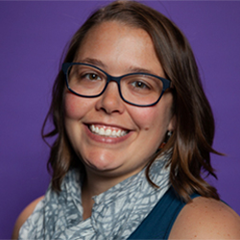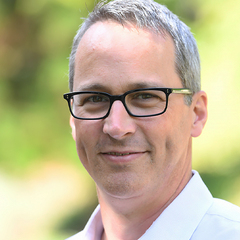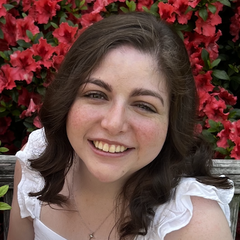About Us
While each of us comes to Westmoreland with unique perspectives on faith and life, we believe that God is still speaking — and you are welcome here. Scroll down to meet our team and learn more about our values, history, and the United Church of Christ.
Values & History
In the early 1900s, Westmoreland UCC adopted these guiding words, which were last modified in January 2025.
Declaration of Purpose
"We do hereby set forth the principles of the Christian faith as commonly held among us, believing that the life, spirit and teachings of Jesus Christ provide the foundation for our faithful aspirations.
It shall be our aim to bring joy to little children, instruction and high ideals to youth, inspiration to people in the midst of life, and comfort to those in life's later years; and to labor together for the betterment of humankind.
Our fellowship shall not be dependent upon identity of theological opinion, or of outward circumstance, or of denominational name, but shall grow from a common loyalty to Jesus; a common passion to serve the world; and a common purpose to do justly, to love kindness, and to walk humbly with God.
Our ideal is a church of the open mind, the warm heart, the aspiring soul, and the social vision, which ever seeks to express, in all the ways of life, the mind and spirit of Jesus."
Through the life and history of our congregation, Westmorelanders have sought to respect the differences among us while attempting to bridge the barriers which have divided and estranged us one from another.
As members of the United Church of Christ we believe that God has bestowed on us the Holy Spirit, binding in covenant all faithful people. As Paul wrote, "There is no such thing as Jew or Greek, slave and free person, male and female, for we are all one in Jesus Christ." Galatians 3:28.
In keeping with our faith and the purpose of this Church and the whole Church:
We honor each human being as a child of God;
We believe, through Jesus Christ, God calls all persons to worship together;
We welcome into our community of faith anyone who believes in the teachings of Jesus Christ;
We acknowledge our diversity as a congregation of the United Church of Christ;
We respect the privacy of our fellow worshippers; and
We cherish the family in all its different forms and celebrate all loving and committed relationships.
We are an open church, affirming the dignity and worth of every person as created in the image of God, welcoming into our fellowship people of all ages, races, abilities, sexual orientation, and gender identity who acknowledge Christ as our foundation and who seek to embody the mind and spirit of Jesus.
Ours is a generations-old story of action inspired by faith.
The church began in 1886 as Mount Pleasant Congregational Church on Newton Street in Washington, DC. At that time, Mount Pleasant was a village with unpaved streets within the District, remote from the city.
The original membership of nineteen grew rapidly reflecting the expansion of the city of Washington and growth of the Congregational denomination in general. A new building was completed on Columbia Road and 14th Street in 1904 with a gymnasium and bowling alleys – a sign of Westmoreland’s progressive ways.
Westmoreland has had twelve senior ministers. The second, M. Ross Fishburn died at age 42 of typhoid fever.
In 1911, a new organization was formed called the League of Service. It was designed for business and professional women, at that time mainly teachers and government employees, who wanted to contribute but were unable to attend daytime meetings. Again, a forward-thinking way of meeting changing times.
In 1926, Moses R. Lovell, the church’s sixth senior minister decided that the midweek prayer meeting be substituted with field trips to various social agencies to learn more about the needs of the city. About this time the Young People's Forum was launched with great success.
During the Depression, the church worked to find jobs for people. The minister then, Russell J. Clinchy, was instrumental in persuading President Hoover to establish the Emergency Relief Commission, which was the first agency to distribute public funds.
In the late 30s and 40s, as Washington expanded, the church began to think about a new home with more parking in a new neighborhood. In 1943, the church selected its current site on Westmoreland Circle, just across the street from the DC line. Construction began in 1948, delayed due to the unavailability of materials during World War II.
In the meantime, a ramp at the main entrance in Mount Pleasant had been built so that President Franklin D. Roosevelt could attend both the funeral of Secretary of the Navy, Frank Knox, and the wedding of Harry Hopkins, his close friend and advisor.
The new building was completed at a cost of $403,708 which included land, the Western Avenue parsonage, furnishings, etc. The Aeolian Skinner organ was installed in 1957.
Between 1949 and 1955, our church school enrollment increased from 92 to 553, largely a result of the baby boom. An education wing was added to the building. In 1957, enrollment peaked at 765 with sixty teachers.
The church welcomed and included people in many ways – a Men’s Club, a regular Kids’ Night, the 20-40 Club (an active and long-lived young adult group), and the Couples’ Club, which appealed to older adults. The church sponsored scout troops for 65 years and held a day camp in the 1950's with a peak enrollment of 550 campers. The Westmoreland Players nurtured talented actors and directors for nearly twenty years.
In 1958, our congregation made the decision to join the new denomination called the United Church of Christ.
During the March on Washington in 1963, Westmoreland voted to provide housing and food for participants, just one of numerous outreach efforts during the turbulent 60's.
After the riots in DC following Martin Luther King’s death, Westmoreland partnered with Lincoln Congregational Temple to create the Lincoln-Westmoreland Housing Authority, now a stand-alone non-profit agency that was the first faith-basd housing project in the nation.
In 1983, the church created the Westmoreland Volunteer Corps, later changed to Westmoreland Service Corps. This program offered five young adults an opportunity for year-long meaningful service, simple living and spiritual growth in intentional community. This carefully selected group served in social service agencies in the DC area while residing in Westmoreland’s former parsonage. In 2021, after careful consideration and deliberation, the program was suspended to create space for examination and re-visioning.
In 2006, the membership of nearby Briggs Memorial Church, an American Baptist congregation, voted to join Westmoreland. The Briggs Center for Faith and Action was created – and we enjoy a close partnership with that foundation and their work for social change.
In 2012, the church voted to join a coalition of congregations working support equal marriage rights for all citizens of Maryland. The church was used a phone bank and advocacy organizing location. The measure passed. In 2013, Rev. Timothy Tutt officiated at the first legal same-sex wedding to take place in Westmoreland Church.
About the UCC
Westmoreland Congregational United Church of Christ was founded as a Congregational Church in 1886. Along with other Congregational Churches, we chose to join the UCC when it was created in 1957. We kept our middle name (Congregational) to honor our past and adopted a new surname (UCC) as a sign of commitment to new relationships. We are in partnership with other UCC churches in the Potomac Assocation (DC area) and the Central Atlantic Conference (VA, DC, MD, DE, NJ).
The United Church of Christ (UCC) is a distinct and diverse community of Christians that come together as one church to join faith and action. With more than 5,100 churches and 1.1 million members across the United States, the UCC serves God in the co-creation of a just and sustainable world. The UCC is a church of firsts, a church of extravagant welcome, and a church where "…they may all be one" (John 17:21).
Since 1957, the United Church of Christ has been the church of firsts, weaving God’s message of hope and extravagant welcome with action for justice and peace. Together, we live out our faith in ways that affect change in our communities. The UCC's many "firsts" mean that we have inherited a tradition of acting upon the demands of our faith. When we read in Galatians that, "There is no longer Jew or Greek, there is no longer slave or free, there is no longer male and female; for all of you are one in Christ Jesus," a demand is made upon us. And so we were the first historically white denomination to ordain an African-American, the first to ordain a woman, the first to ordain an openly gay man, and the first Christian church to affirm the right of same-gender couples to marry. We were in the forefront of the anti-slavery movement and the Civil Rights movement. Our response to the demands of our faith is woven into the history of our country.
Today, we continue to change lives throughout the world. We work alongside more than 200 mission partners. We labor ceaselessly to fight injustice, in the United States and abroad. We instill our vision into our youth and young adults, forging leaders who will imagine new dreams. And we sustain and develop church leaders, pastors, and our local churches to live their faith in exciting new ways. We believe in a God that is still speaking, a God that is all-loving and inclusive. We are a church that welcomes and accepts everyone as they are, where your mind is nourished as much as your soul. We are a church where Jesus the healer meets Jesus the revolutionary, and where together, we grow a just and peaceful world.







